Today, I am sharing the Guru Nanak Dev Ji Biography with you. It was really pleasure to share the information about Guru Nanak Dev Ji who was founder of Sikhism.
Introduction
It was 15th April 1469 when Guru Nanak Dev Ji was born at Nankana Sahib Punjab Pakistan to Hindu family. His father had an occupation of crop revenue accountant. Today all over the world is birth anniversary is celebrated as Guru Nanak Dev Ji Guru Parb by Sikhs.
Guru Nanak Dev Ji even worked as an accountant for a wild but he was be drawn towards the spiritual is a more and he showed a spiritual and intellectual side at a very young age.
There was an event in his life according to Sikh traditions which distinguish him from other people and assured that he was special. Guru Nanak Dev Ji studied both Hinduism and Islam in his lifetime.
He was the one to introduce the concept of longer where everyone partakes of a meal as equal. This tradition of Sikhs is followed even now in Gurudwara. According to them, this practice resembles charity and equality. There are places which he traveled like Multan, Baghdad, Mecca, etc.
| Factors | Information |
|---|---|
| Identity | First Sikh Guru popularly known as Guru Nanak Dev Ji |
| Nationality | Indian |
| Birth | 15, April,1496 AD at Nankana Sahib Punjab |
| Parents | Mother: Mata Tripta, Father: Mehta Kalu |
| Sister | Bebe Nanaki (Elder sister) |
| Wife | Mata Sulakhni |
| Childrens | Baba Sri Chand and Baba Lakhmi Chand/Das |
| Next Guru of Sikhism | Guru Angad dev |
| Death | 2 September 1539 at the age of 70 at Kartarpur, Mughal Empire |
Concept of guru in Sikhism
At the initial days Nanak was called Baba Nanak with Baba meaning in affectionate person like a grandfather. But gradually he was better known as Guru Nanak Dev Ji. Meaning of the word Sikh means a learner and Guru means a teacher. The Punjabi language uses Gurmukhi script which has no capital letter but in English we write the word Guru with G in capital.
In the past, there have been no just 10 human Gurus because, their lifespan and the period from Nanak birth to the passing away of Guru Gobind Singh Ji in 1708. The sacred volume of scripture of the Sikhs was Guru Granth Sahib which was more than just a book which they believed to contain Guru as well as contain compositions of 6 out of 10 gurus.
Sikh was of the belief that all 10 human Gurus had the same spirit of Guruship and had different styles of approach towards different circumstances in which they lived. The first four successive of Guru Nanak war Guru Angad Dev, Guru Amar Das, Guru Ramdas and Guru Arjan Dev who were also poets. The basis of Guru Granth Sahib was their compositions together with Guru Nanak Dev Ji.
The key feature of city life that is the longer was made by Guru Amar Das where the contract was to share vegetarian meal eaten by the people of all ranks sitting together regardless of their social status. He also innovated a Sikh place of pilgrimage and appointed some preachers to lead the local Sikh people.
Guru Ramdas his successor and son-in-law was appointed missionaries to organize and collector offerings and he started the settlement which was renamed Amritsar. Guru Arjun Dev in 1604 installed the volume of scripture in Harmandir Sahib. He is now also remembered as the first Sikh martyr.
After his death his son and the sixth Guru Hargobind became a military leader and so did the tenth Guru, Guru Gobind Rai whose father is presumed to have a high military profile Guru Tegh Bahadur is remembered as a Martyr.
Govind Singh incorporated hymns in Sikh scripture from his father Tegh Bahadur. He instructed other people to regard the Granth as their Guru and the respect it. According to the tradition in 1699 Guru Gobind Rai became Guru Gobind Singh when he initiated with his followers who volunteered their life for him.
Sikh world’s history
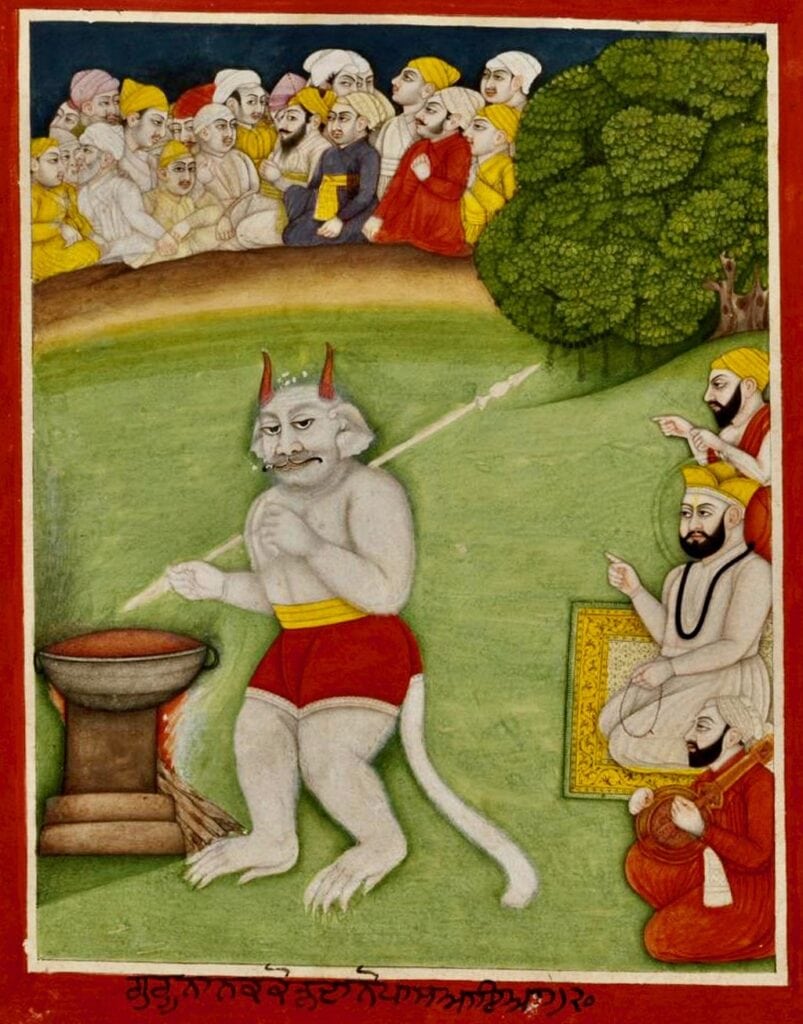
Origin of Sikhism
The origin of Sikhism was in the Punjab area of South Asia, which in the present days falls into the states of India and Pakistan. At that time the main religions of the area were Hinduism and Islam.
It was 1500 CE when the Sikh faith began and when Guru Nanak Dev Ji began this religion different from Hinduism and Islam. There were as many as nine Gurus who followed him and developed this faith in the community over the next centuries.
Sikh’s militarization
By the time of Guru Arjan, the fifth Guru, Sikhism religion was well established. The establishment of Amritsar as the capital of the Sikh World was completed by Guru Arjan and he was the one to compile the first authorized book the Adi Granth of Sikh’s culture. Sikhism was seen as a grade by the state during the time of Arjun and eventually executed his faith in 1606.
Militarization of the community was started by the sixth Guru Hargobind who thought that they would be able to resist any operation and fought a number of battles to safeguard their faith.
There was relative peace with political rulers until there was the time of Mughal emperor Aurangzeb who forced to make his subjects Islam. He was the one to make the ninth Guru Tegh Bahadur arrested and executed in 1675.
The Khalsa
The recreation of Sikh as military group of men and women was done by the tenth Guru Gobind Singh which was known as Khalsa in 1699. His main intention was that the Sikhs should forever be able to depend on their faith.
He was the one to establish the sick right of initiation which was known as Khandey Di Pahul. He even established the five Ks which gave Sikh their unique appearance. He was the last human Guru and Sikh people now treat their scriptures as their Guru.
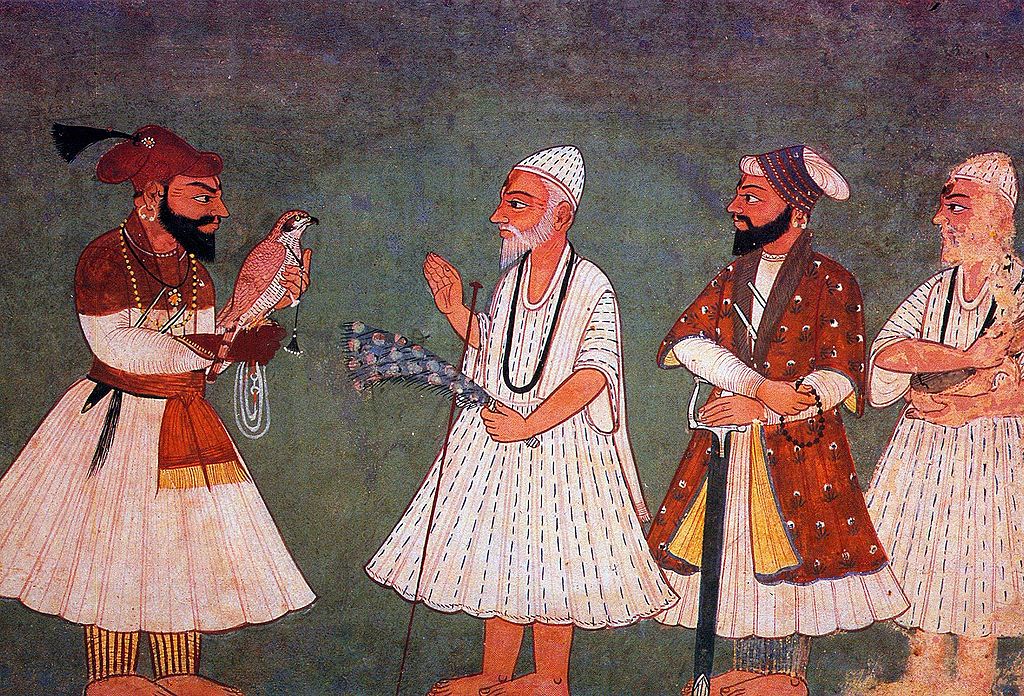
After the Guru’s
Banda Singh Bahadur was the first military leader of the Sikh to follow the Gurus. He was captured and executed in 1716 for leading a successful campaign against the Mughals. The Sikh religion took more and more territory over the next 50 years of the middle century. Lahore was captured by Ranjit Singh in 1799 and in 1801 he established the Punjab as an independent state with himself being a maharaja. He took part in religious acts although being a devout Sikh with Muslims and Hindus.
Defeated by the British
After the death of Ranjit Singh in 1839 the Sikh state was crumbled and damaged by variety of your battles for the leadership. Sikh armies were defeated by the troops of British Empire in 1846 and undertook much Sikh territory. Again in 1849 the Sikh rebelled and defeated by the British. Though, the struggle of Indian freedom fighters and their revolt are quiet exceptional.
The Sikhs and the British Raj
The Sikh and the British after the final battle discovered that they could build a good relationship as they had much in common. This tradition began with Sikh serving with great distinction in the British army. Seek for able to get along with the British pretty well because they thought themselves less of subjects of the Raj and more of partners of the British.
When British took control of the Sikh religion, they were helping themselves to get favorable religious pin by putting their own choices in the control of Gurdwaras. As a result of this in 1919 with Amritsar massacre Sikh and British relationship came to an end.
Birth
Guru Nanak Dev Ji was also referred as Baba Nanak. Most traditional birth stories specify that Nanak was born on the third day of bright lunar fortnight which is known as baishak month of April. This includes the puritan janamsakhi (old traditional birth story), Maharani Janamsakhi, and Vilayat vali janamsakhi.
Karthik birthdates
During the rule of Ranjit Singh in 1815 the festival of Nanak birthday was celebrated in April at his place of birth which is known as nankana Sahib. However, on the day of Nanak birth Guru per subsequently came to be celebrated on full moon day in the month of November which is a karthik month. There are various reasons to adopt Karthik birth date by Sikh community.
One of them might have been the date of Nanak spiritual birth in 1496. The only janamsakhi or birth story that support Karthik birth tradition is of bhai Bala. He was the one to obtain Nanak horoscope from his uncle Lalu and he said that according to the horoscope he was born on a day corresponding to 20 October 1469 CE.
This birth story was written by handle these who were a section of Sikhs who followed a Sikh convert called handal, superstition prevailing in contemporary Northern India according to which when a child is born in the Karthik month he is believed to be weak and unlucky.
Bhai who was an influential Sikh figure a writer, historian as well as a preacher, wrote on a full moon day of Karthik month after run Nanak death and mentioned that Nanak had obtained omniscience on that same day. in the 19th century whatever Hindu festival held on Karthik purnima in Amritsar attracted very huge number of Sikhs.
The same community which was headed by Gyani Sant Singh did not like this fact and started festival of the golden temple on the very same day helding it to be the birth anniversary celebration of Guru Nanak Dev Ji.
Family and Early life
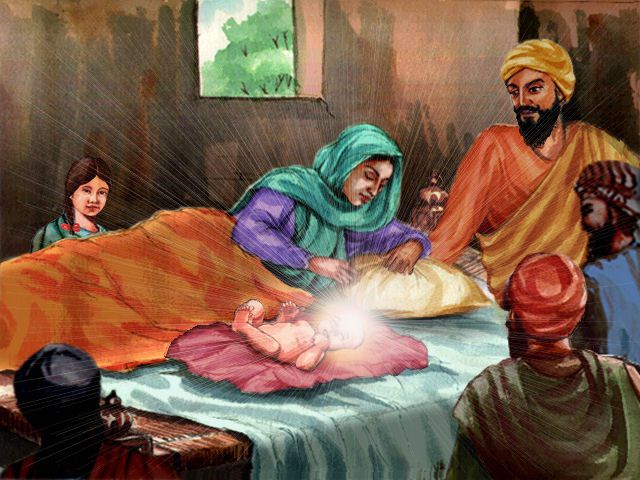
Father Guru Nanak Dev Ji known as Kalyan Chand Das Bedi and mother Mata Tripta were both Hindu Khatri and were employed as merchants. His father particularly was the local collector for crop revenue in the village of Talwandi. According to the traditions which Sikh people followed, the birth and old year of Nanak was assumed to be extra ordinary because Nanak had been blessed with divine grace.
An instance of Nanak was when at the age of five he was said to have raised his voice that he had interest in divine subjects. At the age of 7 when his father and rolled him at the village school as per the custom he astonished his teachers at the school by describing implicit symbolism of the first letter of alphabet category and denoted the unity and oneness of God.
Nanak had only one sister who was 5 year older than him. When she got married in 1475 Nanak moved to Sultanpur because he was very much attached to his sister. His sister’s husband Jairam was an employee at modikhana. He was in the service of Delhi sultanate Lahore governor Daulat Khan where he would help Nanak to get a job. After moving to Sultanpur Nanak started working at modikhana at the age of 16 years only.
After which Nanak married the daughter of Moolchand and Chandu Rani. Her name was sulakhni. Nana got married on 24th September 1487 in a town of Batala. He then had two sons Shri Chand and Lakhmi Chand until 1500.
Teachings
- Guru Nanak Dev Ji thought that there is only one God which is a tenet called ik onkar. This was basically meant to refer to one of the Supreme Being that controls the whole universe.
- He was strictly against the discrimination on the basis of caste. On top of this he also denied the need for priests and rituals
- He was of the opinion that everybody can speak to God directly and he was not an incarnation of God or any prophet. Wahiguru is that concept of God where an entity is shapeless, timeless, invisible and omnipresent. Akal purakh and nirankar are the other names of God in the Sikh faith
- The concepts of Hinduism like Maya, Kali Yuga, jivanmukta, reincarnation and Karma are also seen in Sikhism
- Sikhism is believed to be a bridge between Hinduism and Islam
- He denounced pilgrimages and idol worship
- The three basic religious principles taught by him
- Selflessness- according to this principle it is always good to share with others and give to the one who are less fortunate. This allows avoiding the pitfalls of pride, jealousy and egoism.
- Earning an honest living- this principle shows path of living without exploitation, sword or any deceit
- Naam japna- to this principle Guru Nanak Dev Ji taught others to meditate on god’s name and repeat a Mantra. With repetition of god’s name a person can free himself from selfish path and cultivate happiness. According to him it is not just enough to repeat a Mantra mechanically but selflessly and with real zeal.
- In order to avoid any pitfalls of ego he encouraged the following of Guru who would the lead the person to avoid ego choices and by following some guru the person cultivates a spiritual attitude of devotion and discipline. He propounded social implications and announce the caste system that was prevalent in Hinduism.
- You also taught that external aides like rituals and priests are of no importance. He always stressed on in a spiritual awakening. He also had prolonged journey around Indian subcontinent and Sri Lanka debate Baghdad and Mecca. Along with him there was another Muslim companion Bhai Mardana who travelled in all four directions from his home village. He covered an estimated journey of 28000 kilometer and five major countries during the main mission of 1500- 1524.
- Guru Nanak Dev Ji visited the Muslim shrines during his fourth phase. She forced caught a boat West to Jeddah and then foot traveled towards Mecca. He usually traveled with bhai mardana dressed in the navy blue dress like the Hajis. One of the most important stories is that Nanak fell asleep with his feet was pointing towards the holy shrine of Kaaba.
The Muslim people took it insulting and began bi rating and kicking Nanak assuming that he was dishonoring the house of God. To this Nanak replied very calmly to not be angry because he was tired and needed rest and he respected the house of God as much as they did. He very humbly asked them to turn his feet to the direction in which there is no god.
The Kazi took hold of his feet and rotated him around but soon after that when he lifted his eyes is so that copper was standing in the direction of guru’s feet. In whatever direction he told his feet he saw the car was standing by to which he was amazed by Nanak’s holiness. This proved Nanak point that god is in every direction and every place and that he is in their hearts.
Initially when Guru Nanak Dev Ji set off on his first journey from his village of Talwandi his parents did not agree to let him go because they felt that their son should provide for them in their old age. But Nanak felt that he had or responsibility towards god’s real message. Therefore, he felt that this mission outweighed his personal family obligations and responsibilities.
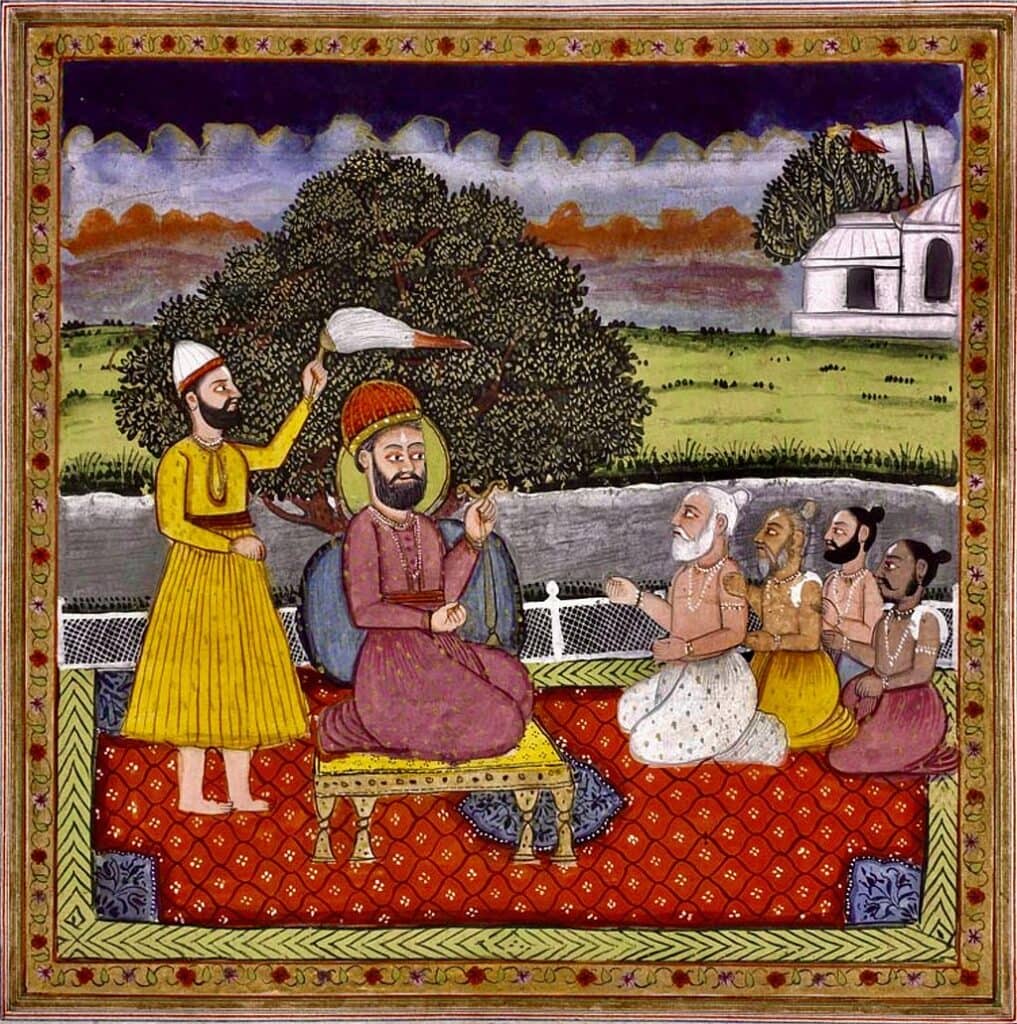
The last and 5th trip he took around Punjab between 1523-1524. After this final udaasi he started travelling less and living on the banks of Ravi river which was in Punjab where Sikhism would take the strongest root.
He appointed bhai Lena in 1539 as a successor renamed him as Guru Angad which means apart of you. With this the tradition of Guru Lineage began.
Soon after a day of appointing his successor he died on 22nd September 1539 in Kartarpur aged 70. After row his passing away there was a huge controversy with Hindu and Muslim followers who are wishing to bury Guru Nanak Dev Ji in different manner. But soon when the cloth was removed from his body and hundreds of flowers were discovered and they realized that they were able to take flowers and remember Nanak in their own way.
Teachings and Legacy
Guru Granth Sahib the Sikh scripture contains the teachings of Nanak is a collection of verses recorded in Gurmukhi. Teachings of Guru Nanak Dev Ji were based on two theories. The first one being that according to Cole and Sambhu, based on hagiographical Janamsakhi, histogens war elevations from God and not a social protest movement. The other theory was Nanak was a Guru and not a prophet.
The hedgehog graphical Janamsakhi was not something written by Nanak but by his later followers without having considered historical accuracy.
Contribution to Humanity
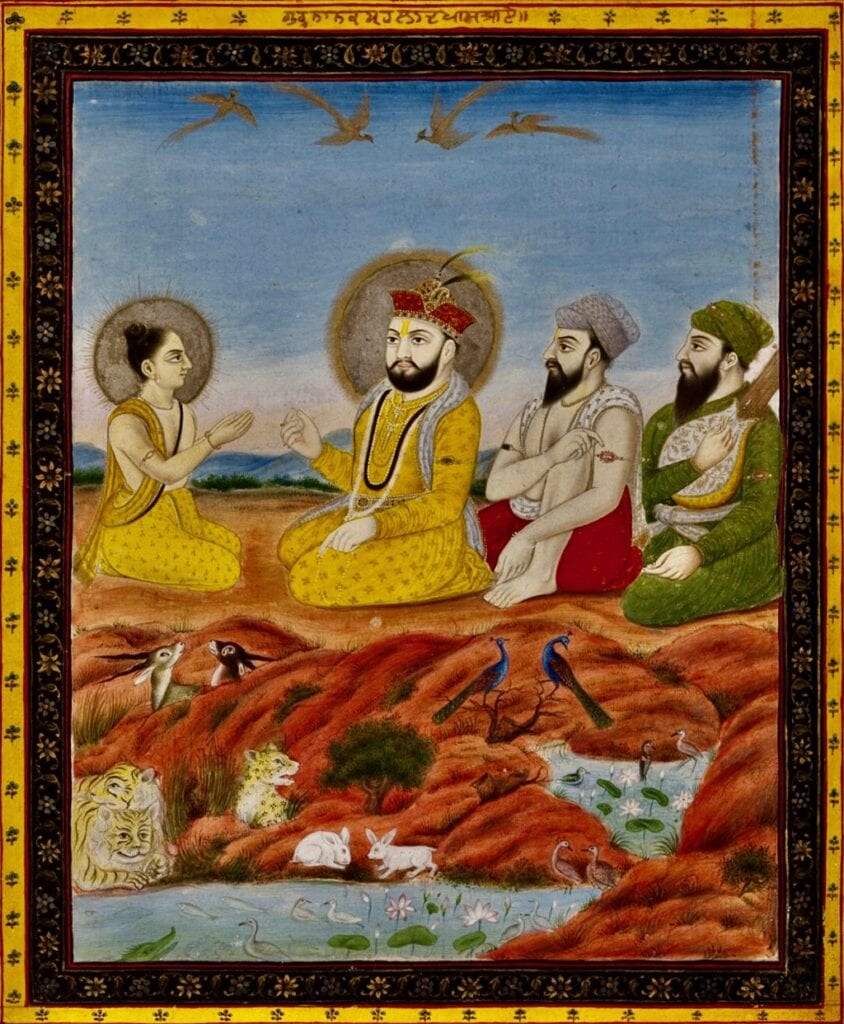
When there was a conflict between various religions the teachings of Guru Nanak Dev Ji came to the rescue at that time. The whole mankind was so intoxicated with the ego jealousy and Pride that people started fighting against each other and taking the name of god. Therefore, the main element of
teaching of Guru Nanak Dev Ji was that there are no Hindus and no Muslim and god is one. His teachings also contributed unintentionally to the unity of Muslims and Hindus to some extent. They emphasized on the relevance of equality of mankind and condemned slavery for any kind of racial discrimination. Equality was the main emphasis of his teachings.
The most important religious figure is Guru Nanak Dev Ji who contributed to women empowerment in India too. He appealed to his followers to respect women and treat them as their equal. He imported among others that men are always bound to women and without Women there cannot be any creation on earth.
He was the one to restore the faith in God by saying that the creator is deeply involved in what a man is trying to achieve on earth. He said that while other religions include the sections of Buddhism and Hinduism in order to achieve salvation, hi he came up with the religion that supported the standard of living of an average householder.
Most importantly he inculcated into the minds of his followers the method to attain salvation while living a normal life within a society. He not only did teach his ideal but also practiced what he said. He was a living example of how people can live their life. Nine other gurus followed his teachings and continued to spread his message when he left for his journey.
9 Sikh gurus
After the death of Guru Nanak Dev Ji the baton of him was passed on to Guru Angad. In Sikhism there were 8 more gurus:
| Sr. No. | Factors | Information |
|---|---|---|
| 1. | Guru Nanak Dev Ji | Who was the founder of Sikhism |
| 2. | Guru Angad | Gurmukhi script was started by him and visited by Humayun |
| 3. | Guru Amardas | The site for golden temple Amritsar was built by him and he institutionalised the faith |
| 4. | Guru Arjan dev | He compiled Guru Granth Sahib a.k.a. Aadi Granth which was executed by Jahangir |
| 5. | Guru Har Gobind | He was the one to introduce seat of power akal takht |
| 6. | Guru Har Rai | He was the one to support Dara shikoh against Aurangzeb |
| 7. | Guru Har Krishan | He had his death before reaching eight years of age and was a Guru from the age of five |
| 8. | Guru Tegh Bahadur | He refused to convert to Islam in 1675 and for that he was publicly beheaded by Aurangzeb |
| 9. | Guru Gobind Singh | He was the one to establish the Khalsa in 1699 and to organize the Sikhs into martial sect. |
(1469-1539) this era marks one of the greatest religious innovators of all time which is Guru Nanak Dev Ji who is the founder of Sikh religion. His birthday is celebrated on April 14th according to Nanak Shahi calendar by Sikhs. The religious ideas of Guru Nanak Dev Ji draw on both Hindu and Islamic thought.
His thoughts form the basis of Sikh scripture and he expressed them in extraordinary poetry. Janam sakhis or set of stories in the Sikh tradition relates to incidents from his life and include many important aspects of his teachings as well. There are teachings in the Sikh tradition which states that his birth and early years were marked with such events which specify that God had sent him out for something very special.
Guru Nanak Dev Ji main religion was Hindu but he extensively went ahead and studied Islam as well. In his childhood he had a great ability to be a poet and a philosopher. There was a very famous story when he was at the age of 11.
This story describes Nanak of his rebellion nature. At that age Hindu boys office caste would wear the scared thread to distinguish them but he refused to the same saying that people should not be distinguished on the basis of thread but on the basis of things that they did and their individual qualities.
He even continued to set an example about a radical spiritual Street by arguing with a local holy man and sage, that things like penances poverty and pilgrimages were of very less importance than an internal thing that is an individual’s soul.
At a very young age he was truly inspired by a powerful spiritual experience that gave him a vision to the path of God and the confirmed his thoughts on a way to spiritual growth by meditating and living in a way that reflects the presence of inner peace within each human being.
In the year 1496 he was married and had a family but instead he set out on a set of spiritual journeys throughout India, Tibet and Arabia in a span of 30 years. He was the one who would easily debate with the learnt man on his ideas of spiritualism. His ideas soon began to take shape to teach a new route to spiritual fulfillment and good life.
At the last stage of his life he was at Kartarpur in Punjab where many disciples joined him as they were attracted by his teachings. One of the most famous teachings of Guru Nanak Dev Ji is that there is only one God and all human beings can directly access God without any need of rituals or priests. His radical social teaching taught everyone to be equal regardless of any gender or caste and also taught everyone to denounce the caste system.
Some more important aspects:
Some more Important Aspects
Guru Nanak Dev Ji was the first Sikh gurus and was the founder of Sikhism He was born in Punjab (now Pakistan) and distributed his spiritual teachings on the basis of universal divinity of creation. He was born in Nankana Sahib near Lahore in modern day Pakistan.
According to him people should concentrate on spiritual practices which would enable them to transform their egoistic behavior into selflessness. His father used to work as a local tax collector of the village. There were many incidents of him that tell us about his spiritual awakening.
He was considered to be a precocious child as he had very deep insights into religious teachings and philosophy. He was someone who would meditate alone and fascinate himself by religious rituals. He had deep interest in his religion but he also had a very rebellious streak of not accepting religious dogma.
He would also debate with religious pandit about the nature of God and their true religious practices. The biographical work of Nanak life is often taken from Janamshakhi and the cars which were written by Bhai Gurdas and Bhai Mani Singh. He was 18 when he got married to Mata Sulakhni in the town of Batala and then had two sons Shri Chand and Lakhmi Chand. At the initial stages he was the one to follow his father’s footsteps and the soon became an accountant but his heart did not accept this.
He was more interested in spending is time meditation spiritual ISM and selfless services to the divine. Nanak was very close to his sister Bibi Nanaki. So when she got married Nanak moved to Sultanpur. There was a local landlord Rai Bular Bhatti who encourages Nanak and was impressed with his unique qualities. Though there were many stories of his potentials in spiritualism but his main teachings and realization begin at the age of 30 around 1499. Nanak had disappeared leaving his clothes near the bank of a stream called Khali Bein.
After his return he remained quiet for a while before pronouncing that he received a vision of God to return back to lead people to this divine amitra. According to him god is beyond any religious dogma or external definitions. He just followed god’s path instead of following Muslim or Hindu religion.
He was the one to teach us that there is no Muslim no Hindu. This statement of him was of social importance because at that time there was a social and political conflict between Islam and Hinduism. He attracted many followers during his lifetime from religious traditions like Hindu, Muslim, etc. He was of the opinion that spirituality should be from within and should be given freely and not depending on any financial things. He also had visitors from distinguished religions and he refused to accept any material gifts.
Later years
- When Guru Nanak Dev Ji was around 16 years of age he started working with his brother in law that is Daulat Khan Lodi and this mark the very bottom period in his life as this would result in him making numerous allusions to the government structure in his future hymns.
- Since he was so hardworking and sincere employee he performed really well in his job. Along with this she was very kind and generous person. When he got married and when he had kids he was not distracted at all from his quest of spiritual knowledge.
- He became friends with Mardana who was a Muslim minstrel with whom he used to meditate and pray. One fine morning along with mardana went to bed in Kali bane or black river and walked into the river and disappeared beneath the water. Since there was no sign of him everyone believes that he had drowned in the river.
- After three days he suddenly appeared out of the river and the told everything about his god’s interaction. He was completely enlightened and spiritually awakened by that incident. Everyone from that point onwards started calling him gurunanak.
- He soon quit his job and started losing interest in worldly affairs like family and work. He even left his wife and children to his parents and told them that God had sent him to spread his divine message and to abide with his wish.
- From that moment onwards he founded the religion of Sikhism which mainly emphasized on equality of every person and rejects any sort of discrimination on the basis of caste, color, creed and gender. The main teaching in Sikhism was to believe in the concept of oneness of God.
- He along with Mardana traveled far spreading the holy message of peace and equality to all the people around them. Even though no one has exact account of his travels yet he is believed to have made at least four major journeys.
- After his long travel he returned home and settled in Kartarpur where he continued his ministry till the very end moment.
- It is because of him that Sikhism is now fifth largest organized religion in the world with approximately 30 million adherents.
Journeys
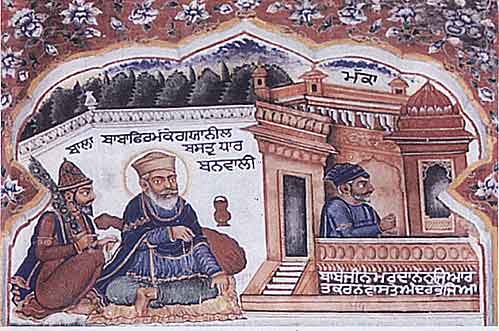
Guru Nanak Dev Ji had his own journeys. During the first quarter of 16 century he went on long journeys for some spiritual gain. He wants visited schedule places in the nine regions of the earth The Hindu and Muslim pilgrimage being the main centers. Guru Nanak Dev Ji He also visited Tibet South Asia and Arabia starting in 1496 at the age of 27. Many accounts even claim that we visited Mount Sumeru of Indian mythology along with Mecca, Baghdad, Achal Batala and Multan.
In 1510-11 CE he also visited Ram Janmabhoomi temple in Ayodhya.
Main Journeys
- Towards Bengal and Assam
- Towards Ceylon, via Tamil Nadu
- Towards Kashmir, Ladakh and Tibet
- Towards Baghdad and Mecca
Final years
When Nanak was around 55 years of age he settled in a village cal Kartarpur and lived there until his death in September 1539. During this time he went only on short journeys to the north Yogi centre of actual and Sufi centres of Pakpattan. At the time when he was about to die he already had acquired many followers in the Punjab region.
Death
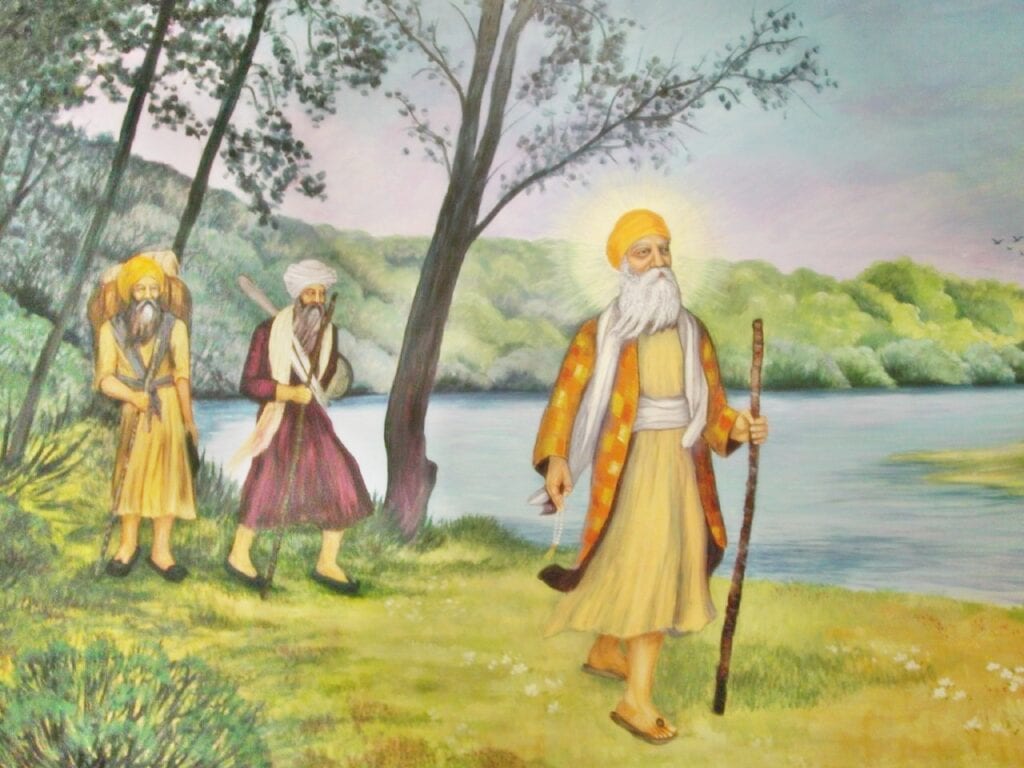
Guru Nanak Dev Ji became extremely popular through his teachings among both Muslim and the Hindu followers. His ideal was such that it would support both the communities. Both the communities at that time claimed Guru Nanak Dev Ji to be their own because his followers who called themselves disciples were also in the race along with Muslims and Hindus.
When he approached his final few days there was a debate among Hindus Muslims and other Sikhs as to who should be given to the honor to perform his last rites. Why Hindus and Sikh wanted to do it according to their custom the Muslims wanted to perform the last rites according to their customs.
At the conclusion it was held that Guru Nanak Dev Ji asked them to bring flowers and let them to his mortal. Should Hindus place the flowers on the right side of his body and the Muslims on the left. The honor of performing his last rites was then to be given to the one whose flowers would remain fresh for a night.
When Guru Nanak Dev Ji was taking his last breath religious communities also follow these instructions and when they came back the next morning to see whose flowers remain fresh they were surprised to see that none of their flowers had witted. Not only that they were more surprised to see that his mortal remains disappeared and all the good sleep in place of his dead body was fresh flowers. It is therefore said that disciples of Guru Nanak Dev Ji so be it Hindus, Muslims or Sikhs pick up their flowers and buried it.
References:
- https://byjus.com/free-ias-prep/this-day-in-history-sept22/
- https://www.bbc.co.uk/religion/religions/sikhism/people/nanak.shtml
- https://www.biographyonline.net/spiritual/guru-nanak-biography.html
- https://www.onlybiography.in/2018/12/guru-nanak-biography.html
Featured Image Credits: Raja Ravi Varma
